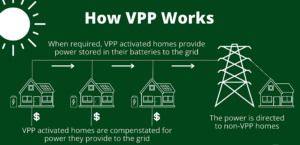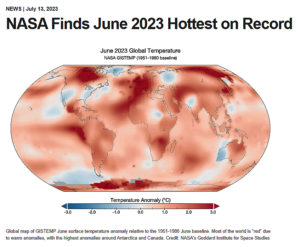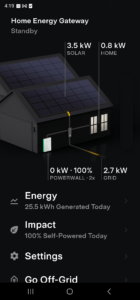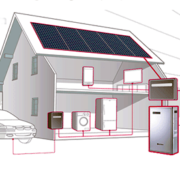Battery Technology Drives Utility Reliability, Resilience, and lower ratepayer costs
Tesla Q2 battery storage deployments increase 222%
Tesla is widely acknowledged as world’s leader in all things tied to Electric Vehicles, but lesser known is its global leadership in utility scale and residential battery storage and energy management systems.
Tesla’s energy storage business is also no stranger to Hawaii. Early on, the company enabled Kauai’s co-op electric utility through solar and battery storage installations to lead the state in clean energy transformation.
Tesla reported Wednesday the company’s utility scale battery storage deployments shot up by 222% year over year in the second quarter, reaching around 3.7 GWh, thanks in part to the ramp up of the first factory dedicated to its Megapack battery product, located in Lathrop, California.
Following its virtual power plants (VPP) success in Australia, Tesla is also developing project to pay customers in Texas for participating in its VPP network designed to provide grid support to the Electric Reliability Council of Texas. Tesla noted that bringing VPP capabilities to customers “requires working through a fractured regulatory environment on a jurisdiction-by-jurisdiction basis”.
 A Virtual Power Plant (VPP) is defined as a network of decentralized, medium-scale power generating units featuring flexible power options for consumer-sited storage and solar power generation systems.
A Virtual Power Plant (VPP) is defined as a network of decentralized, medium-scale power generating units featuring flexible power options for consumer-sited storage and solar power generation systems.
In the residential energy market, Tesla recently surpassed a half million installed Powerwalls — a home battery system — and this week launched a program that allows Tesla Powerwall and vehicle customers to charge their vehicles using excess solar, a company representative said. The company has also begun compensating customers in Texas that are participating in its VPP program.
Tesla runs a similar VPP in Pacific Gas & Electric’s footprint in California, offering customers $2/kWh for electricity that they export back to the grid. Hawaiian Electric’s original, equitable, and popular, but short-lived, Net Metering program (2013-16) offered Hawaiian Electric’s utility customers who invested in home solar and who supplied power back to the grid $0.40/kWh credit – a power supply which off-set the utility’s need to burn high cost oil, coal, and trash in exchange for clean energy-produced electricity from its customers. For HE, however, their profit incentives are embedded in their long term and fossil-fueled plant operation investments – profit subsidized by the utility’s customers (ratepayers).
It’s Hot and Getter Hotter; with no end in sight
It’s no secret that human-induced changes to the Earth’s climate for the past 200 years have begun to overwhelm Earth’s careful systems balance, which increasing apparent to scientists and more recently policy makers are driven particularly by fossil fuel burning, which is now modifying and heating the planet through compounding global increases of heat-trapping greenhouse gas levels in Earth’s atmosphere, thus raising Earth’s average surface temperature and deadly consequences to all life on Earth as we know it today.
 Electricity production (25% of 2021 greenhouse gas emissions) – Electric power generates the second largest share of greenhouse gas emissions and includes emissions from electricity production used by other end use sectors (e.g. industry). This 2021 NASA report total does not reflect the coming shift in energy demand off fossil fuels and to electricity energy consumed to support the coming electrification of most ground transportation.
Electricity production (25% of 2021 greenhouse gas emissions) – Electric power generates the second largest share of greenhouse gas emissions and includes emissions from electricity production used by other end use sectors (e.g. industry). This 2021 NASA report total does not reflect the coming shift in energy demand off fossil fuels and to electricity energy consumed to support the coming electrification of most ground transportation.
Hawaii’s EV Promise, A Double Edged Sword
The idea as to the ability of utilities to supply true clean power in closing growing energy gaps between supply and demand increases created by electric vehicle adoption is at best, foolish and naive.
Many of today’s utility assumptions (especially true for Hawaii) are based on more of the same in meeting forthcoming increases in power production demand. Plug-in and turn-on will generate greater EV electricity demand, with supply potentially fueled by Hawaiian Electric’s present-day grid and multi-island network of combustion-based and dirty fueled power plants. And, that is a prescription for more locally-produced powerplant pollution and greenhouse gas emissions, …not less.
 VPP home and community systems are the next generation in clean energy self-sufficiency and lower cost energy reliability, by introducing battery storage in combination with rooftop solar. And battery storage are projected to include electric vehicles serving more than just transportation needs, ad energy security for home owners in the form of a battery back-up system for the home with wheels.
VPP home and community systems are the next generation in clean energy self-sufficiency and lower cost energy reliability, by introducing battery storage in combination with rooftop solar. And battery storage are projected to include electric vehicles serving more than just transportation needs, ad energy security for home owners in the form of a battery back-up system for the home with wheels.
When last summer’s extreme weather strained California’s grid, the VPP was customer-to-grid system was activated for the first time and it contributed up to 16.5 MW of solar power to the grid, preventing grid outages during periods of extreme customer demand.
On the residential energy side, Tesla recently surpassed a half million installed Powerwalls — a home battery system — and this week launched a program that allows Tesla Powerwall and vehicle customers to charge their vehicles using excess solar, a company representative said.
“In the long run, the value of residential energy software and hardware will be driven by the level of market access that utilities, market operators and regulators permit,” a Tesla representative noted. In part that’s correct, and at least half-true unless utilities forfeit their responsibility to ratepayers and shareholders alike. Utilities struggle with basic structural fact they function as energy monopolies, and operate with business guarantees in terms of profit and risk not afforded other sectors of the economy.
Utility decisions and actions over the next few years, and this especially true for Hawai’i with its extraordinarily high cost for electricity, will be forced out necessity and not foresight to make decisions that either hasten the day when the grid becomes irrelevant and is replaced by distributed community power systems (aka microgrids and VPP systems), and power consumers become self-managed and independent power producers; or through their special energy monopoly status and capital guarantees innovate, adapt, and evolve into the clean energy technologies and services which are increasingly level the playing ground between utilities and consumers.
Time is running out for humans seeking to maintain a habitable planet (and certainly not destroying it), and also for utilities to adapt to true sustainable energy outcomes, or just fade away as relics of a fossil-fueled and GHG emitting past.
Time is running out for humans seeking to maintain a habitable planet, and equally so for utilities to adapt and transform themselves into true sustainable energy outcomes — or fade away as relics of a fossil-fueled and GHG emitting past.




Leave a Reply
Join the Community discussion now - your email address will not be published, remains secure and confidential. Mahalo.